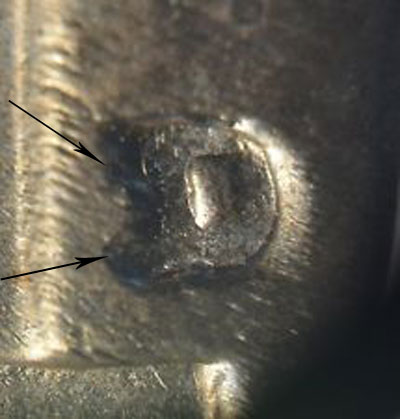Wrong Planchet Error Coins
Sometimes planchets for one coin denomination are fed into a coin-stamping press equipped with dies of another denomination. This results in a coin that has been stamped with a design intended for a differently sized coin. The resulting errors are prized by collectors, though they are usually caught during the manufacturing process and destroyed.
1887 White Stockings (Chicago Cubs) Baseball Banknote Worth $6,000. As with the 1943 copper cents and 1944 steel cents. Examples are a nickel struck on a. 1943-s, 104,060,000; $2.75. Values are for coins in Very Fine-20 condition. While many Jefferson nickel collectors will skip past the 3/2 and doubled eye varieties, some five-cent coin connoisseurs will jump at the chance to include these two scarce varieties in their.
Such errors are sometimes called “double denomination” coins, but that term is also used to refer to coins struck a second time with dies of a different denomination.
Some examples include cents struck on dime planchets, nickels on cent planchets, or quarters on dime planchets. This type of error should not be confused with the much rarer mule which is a coin struck between dies that were never intended to be used together such as a coin with nickel obverse and a dime reverse.

Wrong planchet errors may also occur when the composition of the coin changes. Such situations generally arise when the mint has decided to change the alloy or plating of the coin in the new coinage year, but a few planchets from the previous year—and thus of the previous composition—have yet to be struck. Should the dies be changed for the new year while the old planchets are awaiting striking and not removed, coins using the old composition will be struck with the new year’s date.

Such coins are rare and often highly valued by collectors, as with the 1943 copper cents and 1944 steel cents.
1943 Nickel Penny Value
Wrong Planchet Price Guide
1943 Nickel Value P Mark
A much rarer error is a denomination struck on a foreign planchet. This did occur occasionally with United States (and before that American colonial) coinage in the 17th, 18th, and 19th centuries, and then very rarely in the 20th century.
Wrong planchet and off-metal errors occur when a correctly made blank from one denomination is accidentaly fed into a press for another denomination. Examples are a nickel struck on a cent planchet and a cent struck on a dime planchet.
The coin struck on an incorrect blank will weigh exactly what the denomination of that blank would have been. An even more dramatic wrong planchet error is a coin struck on a previously struck coin of a different metal.